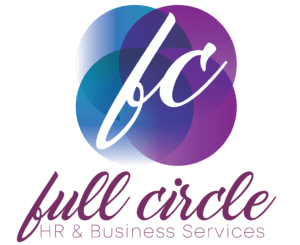
Maintaining a safe workplace is not just a legal obligation but a fundamental responsibility for employers. It’s a critical aspect that hinges on the timely and accurate reporting of hazards, near misses, and incidents. At Full Circle HR & Business Services, we emphasise the importance of user-friendly and accessible Occupational Health and Safety (OHS) reporting pathways and procedures.
The Importance of OHS Reporting
Effective OHS reporting is the backbone of workplace safety. It enables organisations to identify and mitigate risks proactively, ensuring that minor issues do not escalate into severe accidents. Robust reporting systems are essential:
- Prevention of Accidents: Timely reporting helps in identifying potential hazards before they result in accidents. By addressing issues as soon as they are noticed, organisations can prevent injuries and damages.
- Risk Management: Regular and accurate reporting facilitates better risk management. It allows organisations to track incidents and near misses, helping them understand patterns and implement corrective measures.
- Compliance and Accountability: Adhering to the Occupational Health and Safety Act 2004 (Vic) is mandatory. Proper reporting ensures compliance, avoiding legal complications and demonstrating a commitment to workplace safety.
- Fostering a Safety Culture: A well-implemented reporting system promotes a culture of safety. It encourages employees to take an active role in maintaining a safe work environment, reinforcing the idea that safety is a shared responsibility.
Key Components of Effective OHS Reporting Systems
Implementing an effective OHS reporting system involves several critical components:
- User-Friendly Tools: The reporting tools should be straightforward and accessible to all employees. Complicated or cumbersome processes can deter reporting. Our online Member Resources OHS Form, for instance, simplifies reporting by aligning with WorkSafe’s requirements, ensuring consistency and ease of use.
- Clear Reporting Procedures: Establishing clear steps for reporting hazards and incidents is crucial. Employees should know what to report, how to do it, and what information is needed. This clarity ensures that no detail is overlooked during the reporting process.
- Regular Training and Awareness: Training is essential for ensuring employees understand the importance of reporting and how to use the reporting tools. A 15-minute Safety Toolbox Meeting can inform and refresh reporting protocols for employees, and empower them to act promptly in case of an incident.
- Integration with External Requirements: Ensure that internal reporting systems align with external requirements, such as those set by WorkSafe. This includes knowing how to handle notifiable incidents and the procedures for reporting them.
Best Practice for Managing Incidents
In the unfortunate event of a workplace incident, following best practices for management is crucial:
- Immediate Reporting: Prompt reporting of incidents through established pathways is vital. It allows for quick action to mitigate any immediate risks and starts the process for thorough investigation and response.
- Consultation with WorkSafe: Immediately refer to the WorkSafe website or contact WorkSafe to determine if the incident is notifiable. This ensures compliance with reporting regulations and helps in managing the incident appropriately.
- Site Preservation: Preserving the incident site until WorkSafe can inspect it is crucial. This helps in the accurate investigation of the incident and ensures all regulatory requirements are met.
- Internal Investigation: Conducting a detailed internal investigation helps identify the causes of the incident. Document the findings and implement corrective actions to prevent similar occurrences in the future.
- Feedback and Continuous Improvement: Use insights from investigations to enhance your OHS systems. Provide feedback to employees, update training materials, and refine reporting procedures as necessary.
Business Risks
Failing to comply with Occupational Health and Safety (OHS) requirements, including incident notification and site preservation, can result in substantial legal and financial consequences. Under the Occupational Health and Safety Act 2004 (Vic) (at the time of publishing this article) fines can reach up to $6,607.20 for individuals and $33,036.00 for companies per offence, subject to variation.
Beyond these penalties, businesses also risk:
- Reputational Damage: Non-compliance can lead to negative publicity, loss of customer trust, and decreased employee morale.
- Operational Disruptions: Safety breaches can cause worksite closures, project delays, and resource misallocation.
- Financial Losses: Beyond fines, businesses may incur costs from compensation claims, increased insurance premiums, and reduced productivity.
- Loss of Competitive Advantage: Poor safety practices can hinder a business’s ability to attract talent, maintain market position, and invest in innovation.
Ensuring robust OHS reporting and compliance is vital to mitigating these risks and safeguarding a company’s future.
Support and Resources
At Full Circle HR & Business Services, we offer comprehensive resources to support effective OHS reporting:
- Member Report: Effective Pathways for Employee OHS Reporting: This report provides nine recommendations across compliance, policy, and process, offering a robust framework for improving reporting systems.
- Online OHS Reporting Form: A streamlined tool that ensures consistency with WorkSafe requirements and simplifies the reporting process.
- OHS Reporting Posters: Visual aids for the workplace that guide employees on how to report hazards and incidents.
Your next step
To review your existing internal OHS Reporting pathways, request a copy of our Member Report: Effective Pathways for Employee OHS Reporting to review our 9 recommendations for compliance, policy and process; or to sign up to utilise our free Member Resource OHS Report Form with supporting workplace posters, contact our OHS Consultant Tania via hello@fullcirclehr.com.au.
